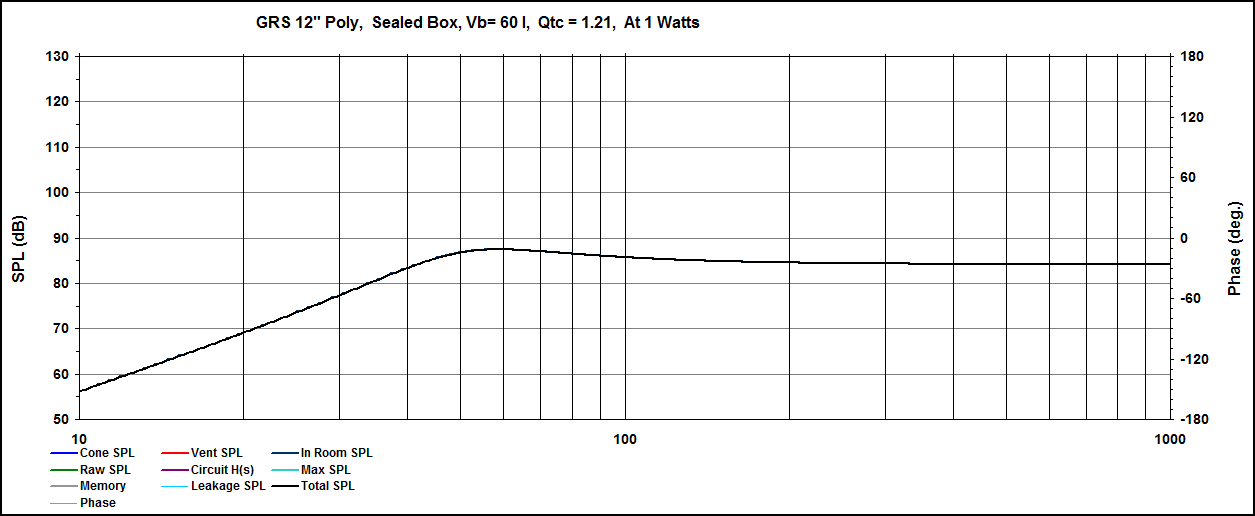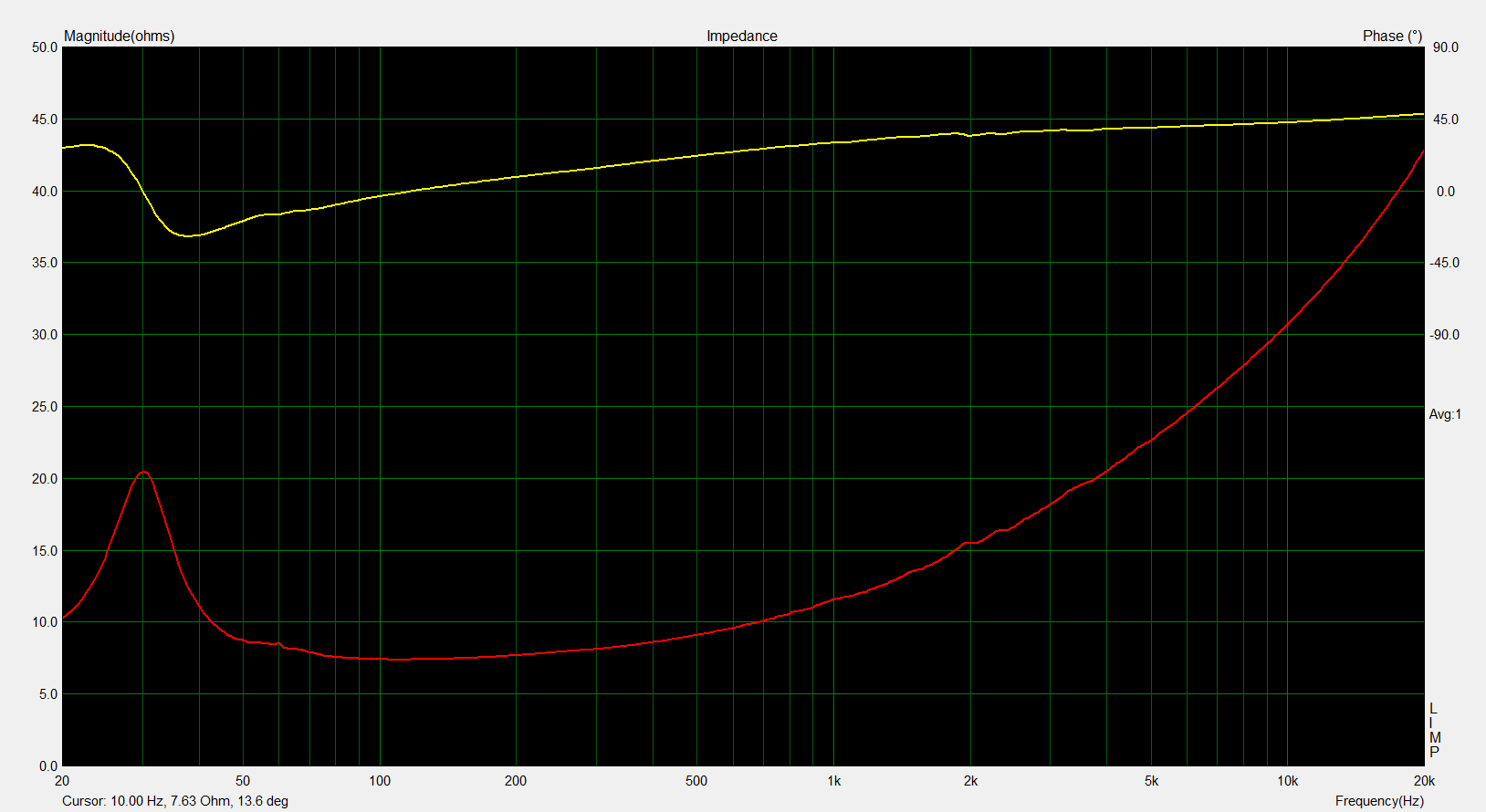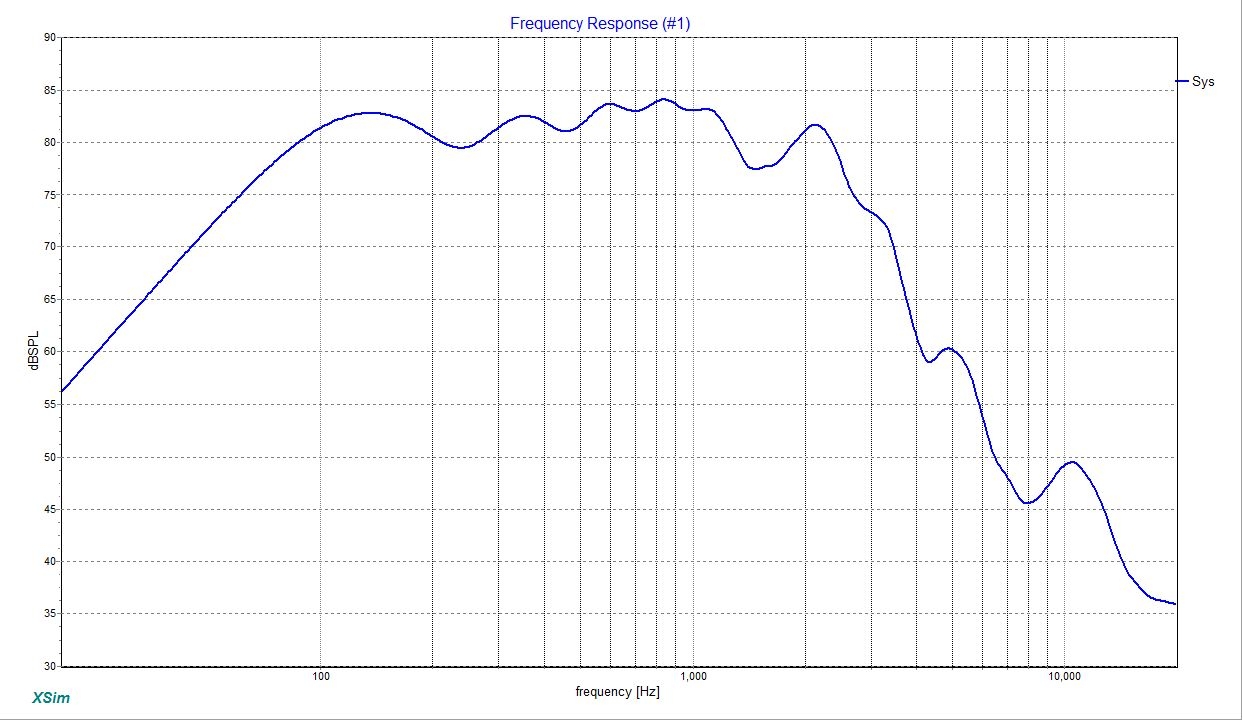Site Links
Howdy, Stranger!
It looks like you're new here. If you want to get involved, click one of these buttons!
Quick Links
Categories
In this Discussion
Who's Online (0)
GRS 12" Poly Woofer
So here we have a $20, 12" woofer that I used in the original Le Singe Sarcophage. Without digging too deep into analyzing the driver, I will point out that several cost savings jump out upon immediate inspection. The frame is, I believe, even lighter than the Dayton Designer series uses - which actually puts it into about the lightest possible there is. Sharp edges around the knockouts, ringy-dingy here and there. Glue squeeze around the gasket, some around dust cap, possibly the shittiest terminals I have ever seen. On the other hand, the cone is very attractive with an oversized dust cap that no doubt contributes to the reasonably low Fs. The motor is obviously bread and butter, but as those who have heard the LSS will attest to, it is not at all a driver that cannot be made pleasant to listen to.
This sample is very new, exercised by hand for a few minutes, purchased to replace the punching bag that one of the original LSS appeared to become at some point. I recently received these speakers from the couple I gifted them to, and am going to give them to my pops to replace his 40 year old Fisher pieces of shit. Anyways:
This sample is very new, exercised by hand for a few minutes, purchased to replace the punching bag that one of the original LSS appeared to become at some point. I recently received these speakers from the couple I gifted them to, and am going to give them to my pops to replace his 40 year old Fisher pieces of shit. Anyways:
Loudspeaker parameters:
Fs = 30.05 Hz
Re = 7.05 ohms[dc]
Le = 230.43 uH
L2 = 826.42 uH
R2 = 18.50 ohms
Qt = 1.02
Qes = 1.56
Qms = 2.96
Mms = 90.35 grams
Rms = 5.770201 kg/s
Cms = 0.000310 m/N
Vas = 113.74 liters
Sd= 510.71 cm^2
Bl = 8.788454 Tm
ETA = 0.19 %
Lp(2.83V/1m) = 85.45 dB
Added Mass Method:
Added mass = 55.00 grams
Diameter= 25.50 cm
Pretty typical of old school sealed box woofers. The Qts is lower than I remember the others being, I may measure the one with dented dust cap to see what six or seven years has done to it. Actually, I am absolutely going to do that.
Here is what it models in a heavily stuffed (and I mean heavily) sealed box similar to the LSS alignment (60L):

~3db ripple centered around 55-60Hz, with a ripple-independent F3/6/10 of 41/34/28. Not shitty at all, I remember loving using these as my mains for a while, the bass is really legit. Diggers. Only 3mm or so of Xmax, so will not exactly shatter your neighbors windows but that little boost on the bottom end really helps with fleshing things out. Pushing enclosure size to 90L (fucking big box we call that), F3/6/10 drops to... 36/30/25 with a Qtc of pretty close to 1.0. Ripple is reduced to low 50's at under 3db. That's pretty low, and means in a typical listening room, useful output will exist to at least 20Hz. Now way will I dedicate 3 cubic feet of my listening space, however. YMMV.
Little impedance sweep for ya:

Whoooooooooooooooop goes the curve. Not something I would ever design a 2-way around.
This is the in-box I took, it is IIRC very close to the 1W/1M I used to take measurements at before it became too big of a pain in the ass. This is not something I would trace and use for design, but it lets you know the upper limit of the woofer:

Here is what it models in a heavily stuffed (and I mean heavily) sealed box similar to the LSS alignment (60L):

~3db ripple centered around 55-60Hz, with a ripple-independent F3/6/10 of 41/34/28. Not shitty at all, I remember loving using these as my mains for a while, the bass is really legit. Diggers. Only 3mm or so of Xmax, so will not exactly shatter your neighbors windows but that little boost on the bottom end really helps with fleshing things out. Pushing enclosure size to 90L (fucking big box we call that), F3/6/10 drops to... 36/30/25 with a Qtc of pretty close to 1.0. Ripple is reduced to low 50's at under 3db. That's pretty low, and means in a typical listening room, useful output will exist to at least 20Hz. Now way will I dedicate 3 cubic feet of my listening space, however. YMMV.
Little impedance sweep for ya:

Whoooooooooooooooop goes the curve. Not something I would ever design a 2-way around.
This is the in-box I took, it is IIRC very close to the 1W/1M I used to take measurements at before it became too big of a pain in the ass. This is not something I would trace and use for design, but it lets you know the upper limit of the woofer:

I have a signature.


Comments
Loudspeaker parameters:
Dan
A semi-well kept secret is that the Dayton Designer stuff is generally inferior to the GRS stuff, at least the poly woofer lineup.
The only Dayton Designer driver I've used was the 7" driver and I actually kind of liked it. It had a nice big magnet and a decent stamped frame. Midrange was smooth and easy going and the bass was robust. Moving up in size to the 8", 10" and 12" though, I'm not sure I'd pay 2 -3 times more for the DS over the GRS.
Rory's Iguanas sounded quite good and used the 4" paper cone GRS as the mid and the 10SW for bass duty. I think all the right corners were cut in the GRS line.
Dan
I used the GRS 4FR-8, and other than some consistency issues, the sound, quality etc. was above the $8 price.